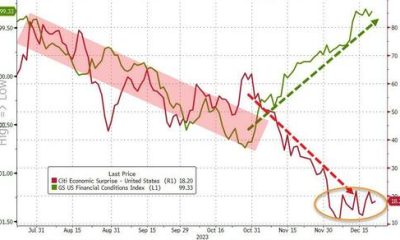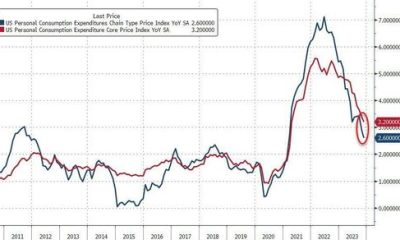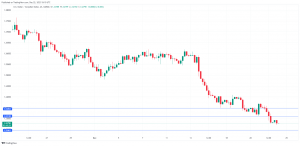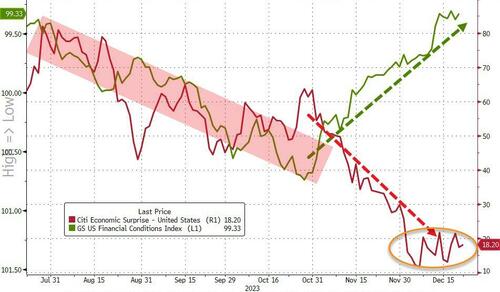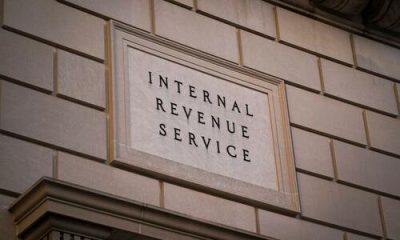Economics
What’s in a Name? Silicon Valley Bank and Who Should Bear the Risk
Is there a more fitting name for a bank that has taken on too much risk than “Silicon Valley Bank”? Now it has failed, but instead of taking down with…

Is there a more fitting name for a bank that has taken on too much risk than “Silicon Valley Bank”? Now it has failed, but instead of taking down with it those most responsible, the federal government has stepped in to rescue its explicitly uninsured depositors. The Feds promise “no losses will be borne by the taxpayer,” but they have a funny definition of taxpayer that excludes remaining prudent banks now charged an increased “assessment” by the government- that is definitely not a tax.
The federal government is indeed partially responsible for this, playing its typical role as both arsonist and fireman – but not because of a failure of regulation. How many institutions are more regulated than a California bank? (Or to harken back, more regulated than saving and loans associations that failed by the thousand?) Regulators don’t have the insight or incentive to preempt such things but, alas, they have the power to make things worse.

Yes, we’ve got yet more moral hazard piled on as we constantly “privatize gains and socialize losses” through bailouts of the biggest risk-takers. But we also have the Federal Reserve artificially holding down interest rates for years in order to goose the economy and make it easier for the government to borrow. With interest rates rising toward market reality, now banks’ balance sheets don’t look so hot. And Silicon Valley Bank tried to outcompete (or just didn’t know what they were doing), taking on far too much risk by assuming low interest rates were forever and failing to hedge a change. A general solution is to get the Fed out of setting interest rates and let bankers figure it out on their own – but there will always be private actors who take on excess risk.
The bible of monetary policy – Walter Bagehot’s Lombard Street – says that it would be best not to have a central bank at all but, if you do have a lender of last resort – and this is its most famous advice – you lend freely at a high interest rate against good securities. Which is exactly what you’d expect a private lender to do with sufficient capital (indeed, in the United Kingdom at the time, the central bank was private). Illiquid banks get money. Insolvent banks don’t. Silicon Valley Bank tried to get private support and everybody with their own money on the line thought it was too risky. So the taxpayer – sorry, the assessment-payer – inherits the biggest problems in the system.
But what of the risk-takers themselves? Silicon Valley Bank’s executives rode the success all the way up and even sold millions of dollars of stock just before receivership. Now the government pledges that executives and owners are wiped out, but they get to keep all their old gains. A classic historical regulation that is the greatest induction to prudence that banking has ever seen is to have personal liability for executives and owners if their bank fails – let the creditors go after who was responsible.
We are also talking about sophisticated business people putting their money in an insolvent bank, partially because they got extra yield or other fringe benefits. As the tech world bemoans finding out how many people are “rooting against tech” – or their woke ideology – they should realize that some of us are instead rooting for responsibility. We are relying on uninsured depositors to keep bankers honest. But apparently no more.
A traditional thought is that it’s a lie that money can be in two places at once (freely available to you in your checking account AND being lent out by the bank) and so therefore the reserve requirement ought to be not 10% but 100%. In such a situation, absent fraud, every bank is solvent. You have two options: you either have total access to your cash at any time (but probably have to pay for such safety, as you would if you stored money in a safe deposit box) OR you can buy bonds (where you get interest but you don’t have access).
Of course, in the unlikely event we moved back toward asset-backed currencies, a free banking system (especially its Scottish variety at the time of Adam Smith) has proved it can be self-policing even without reserve requirements – private actors then have personal reason to call out the irresponsibility of their peers. In the meantime, we will most likely suffer the vagaries of a system that both props up the government and robs capitalism of its most potent incentives – that anyone might both reap the rewards and suffer the consequences of their own actions.
Grant Starrett is a real estate investor in Murfreesboro, Tennessee. He received his BA in history from Stanford and a JD from Vanderbilt. His writing has been published in the Wall Street Journal, National Review, etc. and he also writes book reviews every couple weeks for a substack distributed through GrantReadsBooks.com
(0 COMMENTS)
monetary
reserve
policy
interest rates
fed
central bank
monetary policy
bailouts

Argentina Is One of the Most Regulated Countries in the World
In the coming days and weeks, we can expect further, far‐reaching reform proposals that will go through the Argentine congress.
Crypto, Crude, & Crap Stocks Rally As Yield Curve Steepens, Rate-Cut Hopes Soar
Crypto, Crude, & Crap Stocks Rally As Yield Curve Steepens, Rate-Cut Hopes Soar
A weird week of macro data – strong jobless claims but…
Fed Pivot: A Blend of Confidence and Folly
Fed Pivot: Charting a New Course in Economic Strategy Dec 22, 2023 Introduction In the dynamic world of economics, the Federal Reserve, the central bank…



